2-溴-N-甲基苯胺 ,2-bromo-N-methylaniline ,95%
产品编号:SIGMA-630918| CAS NO:6832-87-7| 分子式:C7H8BrN| 分子量:186.0491
本网站销售的所有产品仅用于工业应用或者科学研究等非医疗目的,不可用于人类或动物的临床诊断或者治疗,非药用,非食用,
| 产品名称 | 2-溴-N-甲基苯胺 |
|---|---|
| 英文名称 | 2-bromo-N-methylaniline |
| CAS编号 | 6832-87-7 |
| 产品沸点 | 243.6±23.0 °C at 760 mmHg |
| 产品密度 | 1.5±0.1 g/cm3 |
| 产品闪点 | 101.1±22.6 °C |
| 精确质量 | 184.984009 |
| PSA | 12.03000 |
| LogP | 2.28 |
| 外观性状 | Liquid | Brown |
| 蒸气压 | 0.0±0.5 mmHg at 25°C |
| 折射率 | 1.613 |
| 稳定性 | 常温常压下稳定,避免强氧化剂 |
| 储存条件 | 密闭保存 |
相关文档
化学品安全说明书(MSDS)
下载MSDS质检证书(COA)
相关产品
| 符号 |
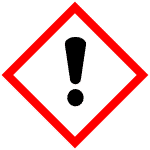
GHS07 |
|---|---|
| 信号词 | Warning |
| 危害声明 | H302-H319 |
| 警示性声明 | P305 + P351 + P338 |
| 个人防护装备 | Eyeshields;Faceshields;full-face respirator (US);Gloves;multi-purpose combination respirator cartridge (US);type ABEK (EN14387) respirator filter |
| 危害码 (欧洲) | Xn |
| 风险声明 (欧洲) | R22 |
| 安全声明 (欧洲) | S37-S39 |
| 危险品运输编码 | UN 3334 |
| WGK德国 | 2 |
| 海关编码 | 2921420090 |
|
Section1. IDENTIFICATION OF THE SUBSTANCE/MIXTURE Product name: 2-Bromo-N-methylaniline Section2. HAZARDS IDENTIFICATION Classification of the substance or mixture According to Regulation (EC) No1272/2008 Acute toxicity, Oral (Category 4) Eye irritation (Category 2)
According to European Directive 67/548/EEC as amended. Harmful if swallowed. Label elements Pictogram Signal wordWarning Hazard statement(s) H302Harmful if swallowed. H319Causes serious eye irritation. Precautionary statement(s) P305 + P351 + P338IF IN EYES: Rinse cautiously with water for several minutes. Remove contact lenses, if present and easy to do. Continue rinsing. Hazard symbol(s) XnHarmful R-phrase(s) R22Harmful if swallowed. S-phrase(s) S37/39Wear suitable gloves and eye/face protection. Other hazards - none Section3. COMPOSITION/INFORMATION ON INGREDIENTS Formula: C7H8BrN Molecular Weight: 186,05 g/mol CAS-No.EC-No.Index-No.ClassificationConcentration 2-Bromo-N-methylaniline 6832-87-7--Acute Tox. 4; H302- Xn, R22 For the full text of the H-Statements mentioned in this Section, see Section 16. Section4. FIRST AID MEASURES General advice Consult a physician. Show this safety data sheet to the doctor in attendance. If inhaled If breathed in, move person into fresh air. If not breathing, give artificial respiration. Consult a physician. In case of skin contact Wash off with soap and plenty of water. Consult a physician. In case of eye contact Rinse thoroughly with plenty of water for at least 15 minutes and consult a physician. If swallowed Never give anything by mouth to an unconscious person. Rinse mouth with water. Consult a physician. Section5. FIRE-FIGHTING MEASURES Suitable extinguishing media Use water spray, alcohol-resistant foam, dry chemical or carbon dioxide. Special protective equipment for fire-fighters Wear self contained breathing apparatus for fire fighting if necessary. Section6. ACCIDENTAL RELEASE MEASURES Personal precautions Use personal protective equipment. Avoid breathing vapors, mist or gas. Ensure adequate ventilation. Environmental precautions Prevent further leakage or spillage if safe to do so. Do not let product enter drains. Discharge into the environment must be avoided. Methods and materials for containment and cleaning up Soak up with inert absorbent material and dispose of as hazardous waste. Keep in suitable, closed containers for disposal. Section7. HANDLING AND STORAGE Precautions for safe handling Avoid contact with skin and eyes. Avoid inhalation of vapour or mist. Normal measures for preventive fire protection. Conditions for safe storage Keep container tightly closed in a dry and well-ventilated place. Containers which are opened must be carefully resealed and kept upright to prevent leakage. Store in cool place. Section8. EXPOSURE CONTROLS/PERSONAL PROTECTION Personal protective equipment Respiratory protection Where risk assessment shows air-purifying respirators are appropriate use a full-face respirator with multi-purpose combination (US) or type ABEK (EN 14387) respirator cartridges as a backup to engineering controls. If the respirator is the sole means of protection, use a full-face supplied air respirator. Use respirators and components tested and approved under appropriate government standards such as NIOSH (US) or CEN (EU). Hand protection Handle with gloves. Gloves must be inspected prior to use. Use proper glove removal technique (without touching glove's outer surface) to avoid skin contact with this product. Dispose of contaminated gloves after use in accordance with applicable laws and good laboratory practices. Wash and dry hands. The selected protective gloves have to satisfy the specifications of EU Directive 89/686/EEC and the standard EN 374 derived from it. Eye protection Face shield and safety glasses Use equipment for eye protection tested and approved under appropriate government standards such as NIOSH (US) or EN 166(EU). Skin and body protection Complete suit protecting against chemicals, The type of protective equipment must be selected according to the concentration and amount of the dangerous substance at the specific workplace. Hygiene measures Handle in accordance with good industrial hygiene and safety practice. Wash hands before breaks and at the end of workday. Section9. PHYSICAL AND CHEMICAL PROPERTIES Appearance Formliquid Colourbrown Safety data pH no data available Melting pointno data available Boiling point107 - 109 °C at 16 hPa - lit. Flash point103 °C - closed cup Ignition temperature no data available Lower explosion limit no data available Upper explosion limit no data available Density1,589 g/cm3 at 25 °C Water solubilityno data available Partition coefficient: log Pow: 2,607 n-octanol/water Section10. STABILITY AND REACTIVITY Chemical stability Stable under recommended storage conditions. Conditions to avoid no data available Materials to avoid Strong oxidizing agents Hazardous decomposition products Hazardous decomposition products formed under fire conditions. - Carbon oxides, nitrogen oxides (NOx), Hydrogen bromide gas Section11. TOXICOLOGICAL INFORMATION Acute toxicity no data available Skin corrosion/irritation no data available Serious eye damage/eye irritation no data available Respiratory or skin sensitization no data available Germ cell mutagenicity no data available Carcinogenicity IARC: No component of this product present at levels greater than or equal to 0.1% is identified as probable, possible or confirmed human carcinogen by IARC. Reproductive toxicity no data available Specific target organ toxicity - single exposure no data available Specific target organ toxicity - repeated exposure no data available Aspiration hazard no data available Potential health effects InhalationMay be harmful if inhaled. May cause respiratory tract irritation. IngestionHarmful if swallowed. SkinMay be harmful if absorbed through skin. May cause skin irritation. EyesCauses eye irritation. Signs and Symptoms of Exposure To the best of our knowledge, the chemical, physical, and toxicological properties have not been thoroughly investigated. Additional Information RTECS: Not available Section12. ECOLOGICAL INFORMATION Toxicity no data available Persistence and degradability no data available Bioaccumulative potential no data available Mobility in soil no data available PBT and vPvB assessment no data available Other adverse effects Harmful to aquatic life. no data available Section13. DISPOSAL CONSIDERATIONS Product Offer surplus and non-recyclable solutions to a licensed disposal company. Contact a licensed professional waste disposal service to dispose of this material. Contaminated packaging Dispose of as unused product. Section14. TRANSPORT INFORMATION ADR/RID Not dangerous goods IMDG Not dangerous goods IATA UN-Number: 3334 Class: 9 Proper shipping name: Aviation regulated liquid, n.o.s. (2-Bromo-N-methylaniline) SECTION 15 - REGULATORY INFORMATION N/A SECTION 16 - ADDITIONAL INFORMATION N/A |
| 上游产品 10 | |
|---|---|
| 下游产品 8 | |

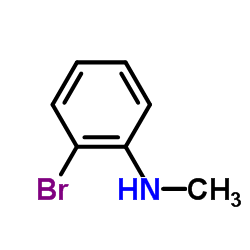
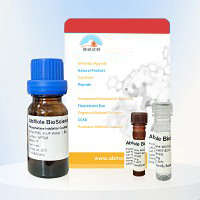
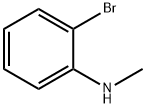
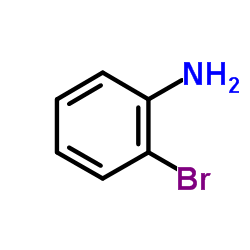
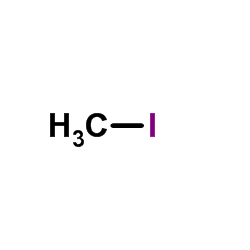
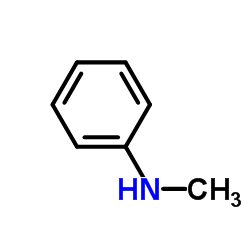
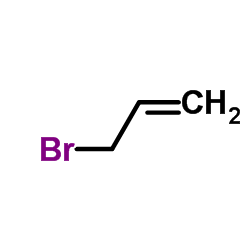
![3-[(2-bromoanilino)methyl]-5,5-dimethylimidazolidine-2,4-dione结构式](/20230522/61783-59-3.png)
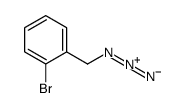
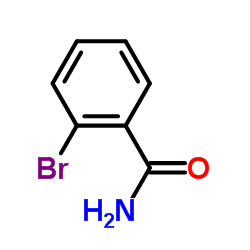
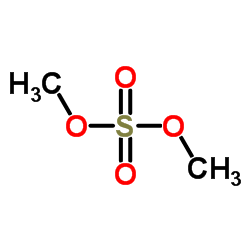
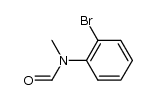

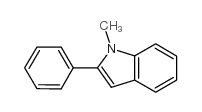
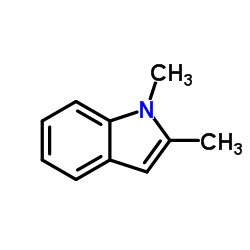
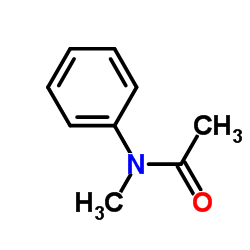
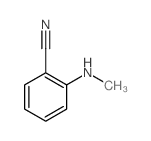
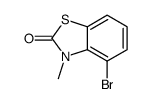
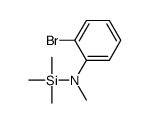
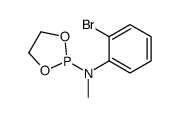
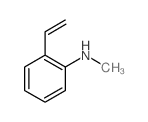





 浙公网安备 33010802013016号
浙公网安备 33010802013016号